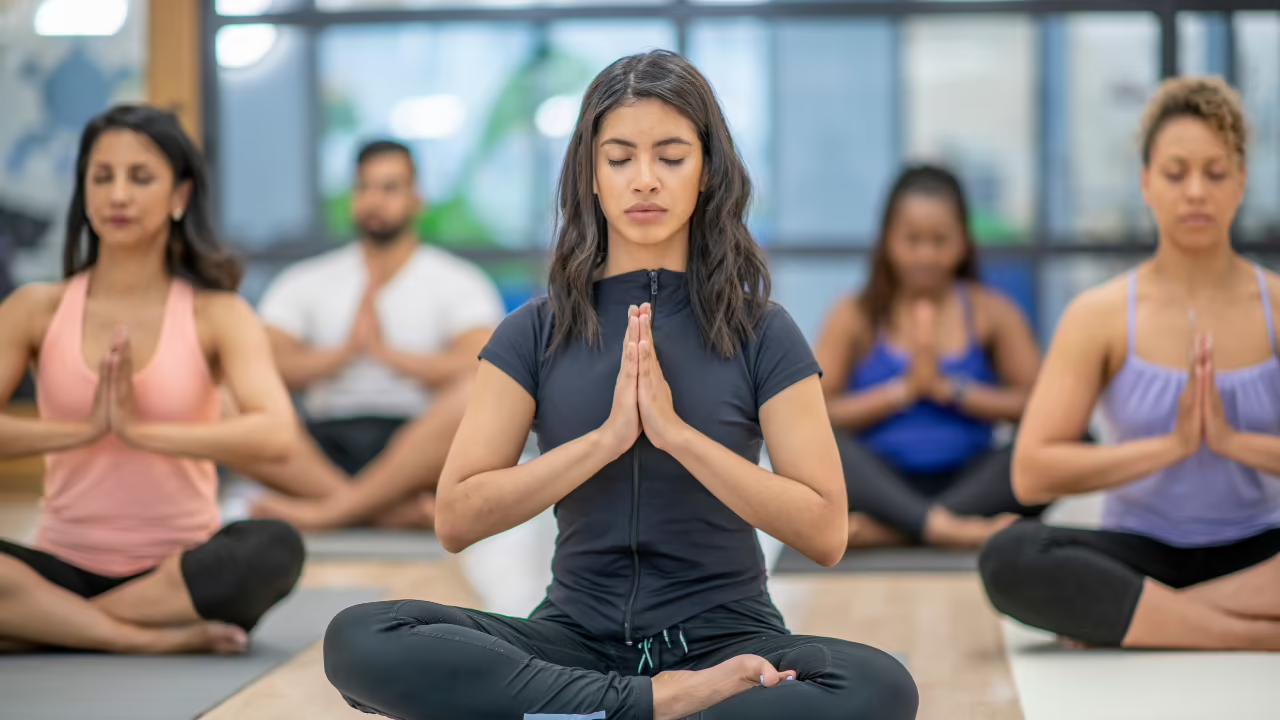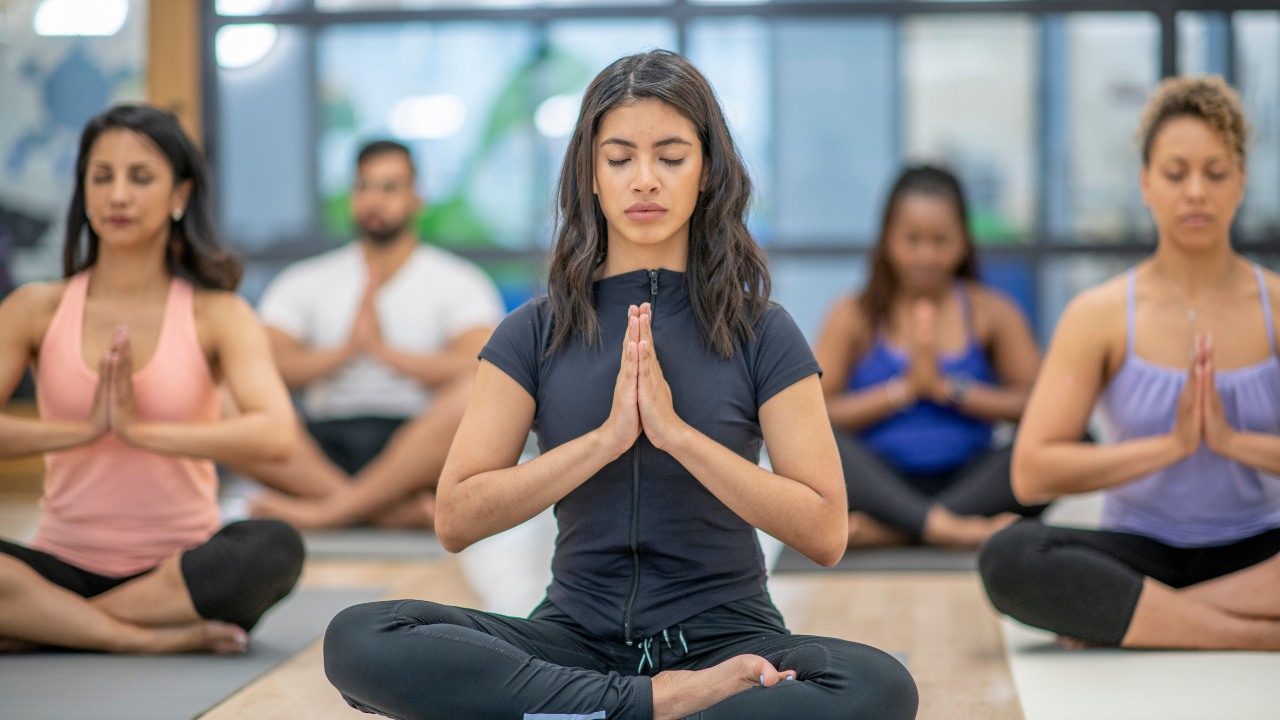
The Right Amount of Time to Hold Yoga Poses for Maximum Weight Loss Benefits
When it comes to yoga, finding the right balance for how long you hold each pose is crucial, especially if your goal is to lose weight. The duration for holding poses can directly impact your results, so it’s important to approach it in a way that matches your fitness level, the type of pose you’re doing, and your specific goals.
Let’s dive into how long you should hold each pose for the best weight loss benefits, why it’s important to listen to your body, and how to incorporate yoga into a healthy routine that supports your weight loss journey.
Pssst… Have you bought a yoga mat yet? If not, snag my favorite mat—it’s perfect for making your practice more comfortable and effective!
How Long Should You Hold Yoga Poses for Weight Loss?

So, how long should you hold each yoga pose if weight loss is your goal? There isn’t a one-size-fits-all answer, as it depends on a few factors like your fitness level, the type of pose you’re doing, and your overall objectives.
A good starting point is to hold a pose for a duration that feels challenging but doable for you. As you get stronger and more accustomed to the poses, you can gradually increase the length of time you hold them. But always listen to your body—if something feels uncomfortable or painful, stop and rest.
Fitness Level and Pose Type Matter
The specific pose you’re practicing also plays a role in how long you should hold it. Some poses engage multiple muscle groups and demand more strength, meaning they’ll be effective when held for longer periods. On the flip side, other poses are more restorative, and holding them for a shorter time might be sufficient.
For example, poses like downward-facing dog or plank target several muscle groups at once, so holding them for 30 seconds to 1 minute might be ideal to get a solid workout. Poses like child’s pose or corpse pose, which are restorative in nature, don’t require a long hold to reap their benefits.
Example Poses and How Long to Hold Them

Here are some general guidelines on how long to hold common yoga poses. Remember, these are just starting points, and you should adjust based on how your body feels:
- Downward-facing dog: Hold for 30 seconds to 1 minute
- Plank: Hold for 30 seconds to 1 minute
- Warrior II: Hold for 30 seconds to 1 minute
- Tree pose: Hold for 30 seconds to 1 minute
- Child’s pose: Hold for 30 seconds to 1 minute
- Corpse pose: Hold for 3-5 minutes (this is for relaxation and recovery)
These are general time frames that work well for most people, but always listen to your body and adjust accordingly!
Benefits of Holding Poses for Longer Periods of Time
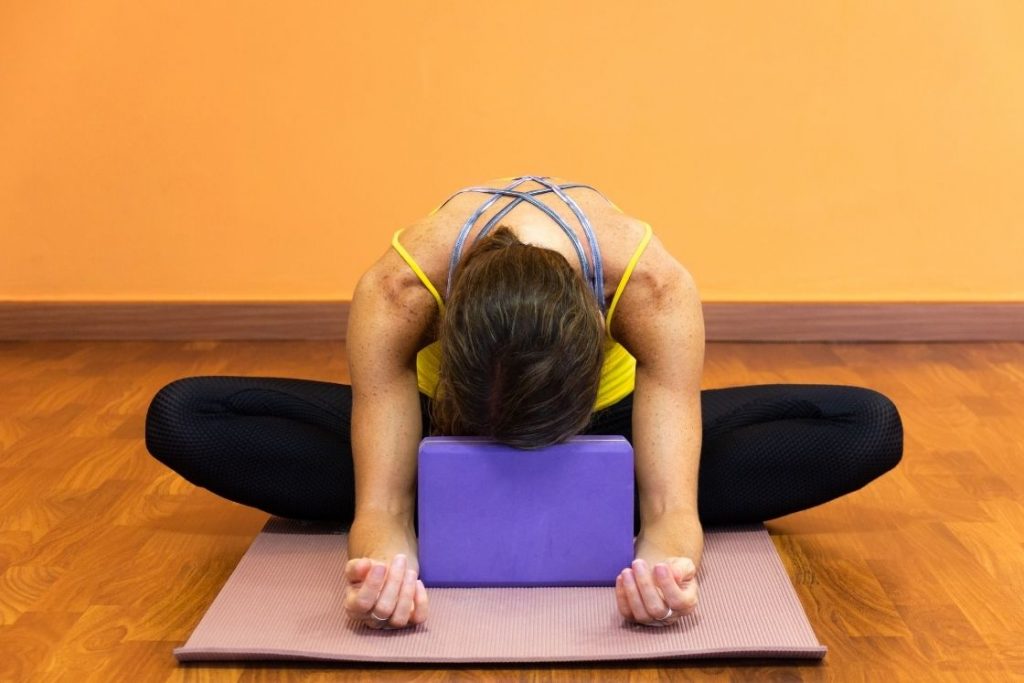
Holding yoga poses for an extended period provides a variety of benefits that can help with weight loss and overall fitness. Here’s what holding poses longer can do for you:
- Increases Strength and Endurance
When you hold a pose, your muscles are actively working to maintain the position, which builds muscle strength over time. The more you hold, the stronger you get, and the more calories your body burns to keep those muscles engaged. - Improves Balance and Coordination
Holding a pose for longer periods gives you the chance to focus on your breath, posture, and alignment, which helps you develop better balance and coordination. This improved body awareness will help you move more efficiently in other activities, too. - Boosts Your Metabolism
Longer holds also engage your muscles more, which means more energy is being expended to keep you in position. This can lead to a higher metabolism, which burns more calories both during and after your yoga session. - Effective Workout for Weight Loss
Longer holds provide an effective way to build strength and burn fat. The sustained muscle engagement makes these poses more challenging, leading to greater calorie burn and muscle toning.
Listening to Your Body

As much as holding poses for a longer period can boost your workout, it’s super important to listen to your body. Don’t push yourself too hard, and if you start feeling discomfort or pain, take a break or modify the pose. Yoga should never be painful—there’s a fine line between a good challenge and overexertion, so always respect your limits.
If you’re new to yoga or returning after a break, start with shorter holds and gradually increase the time as your strength and endurance improve. For more experienced practitioners, you can challenge yourself with longer holds, but still, check in with your body often to make sure you’re not overdoing it.
Varying Hold Times for a Balanced Practice
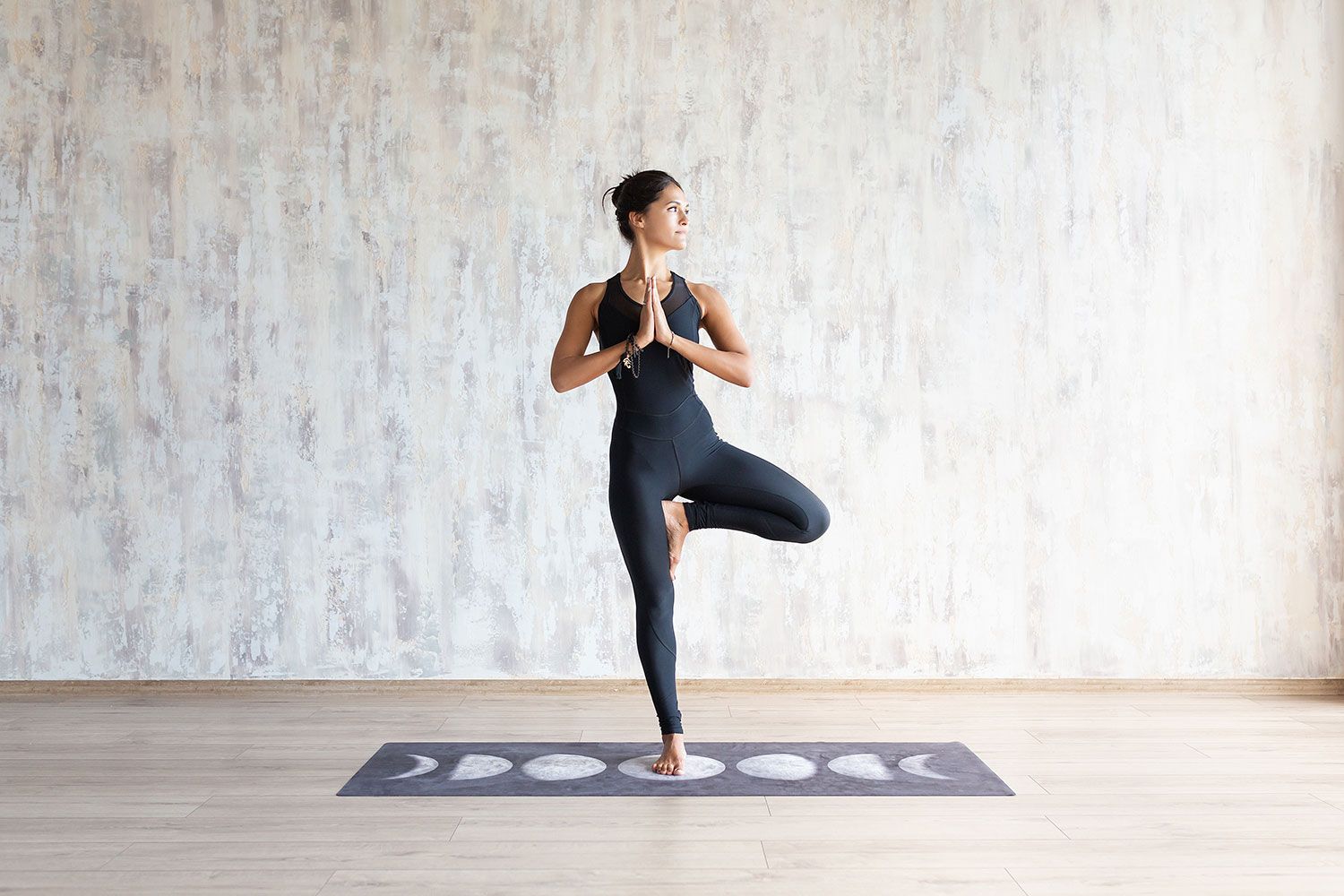
It’s also important to vary the length of time you hold different poses throughout your practice. A well-rounded yoga session combines both short and long holds to challenge different parts of the body. For example, you can mix faster-paced, strength-building poses with slower, restorative poses. This gives your muscles the time they need to engage while also allowing for periods of relaxation and stretching.
Pro Tip: A good routine might involve holding some poses for 30 seconds to 1 minute for strength and balance, and then longer holds for poses like corpse pose (3-5 minutes) to help your body recover and relax.
How to Incorporate Yoga into Your Weight Loss Routine
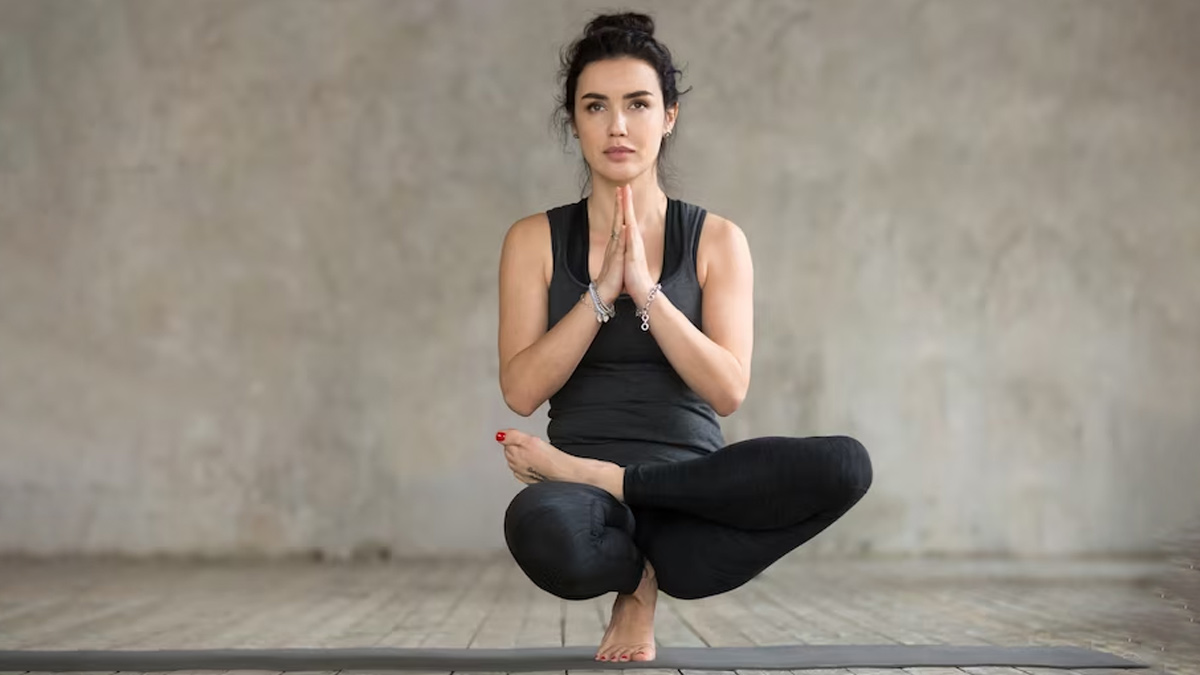
If weight loss is your goal, yoga can be a great addition to your fitness plan. But it’s important to keep a few things in mind:
- Consistency is Key
Make yoga a regular part of your routine. Try to practice several times a week, even if it’s just for a short session. Consistency will help you build strength, flexibility, and endurance, and help keep you on track toward your weight loss goals. - Try Different Styles of Yoga
Mix things up with different types of yoga, like vinyasa flow for a fast-paced, calorie-burning session, or yin yoga for slower, deep stretches. Trying different styles keeps your practice interesting and challenges your body in different ways. - Combine Yoga with Other Exercises
Yoga alone can certainly support weight loss, but combining it with other activities like strength training or cardio can speed up your results. A balanced routine that includes a mix of yoga, walking, running, or strength exercises will help maximize your weight loss efforts. - Focus on Diet
Remember, exercise alone won’t lead to significant weight loss without proper nutrition. Pair your yoga practice with a healthy, balanced diet to fuel your body and support your fitness goals.
Which Yoga Poses Are Best for Weight Loss?

Some yoga poses are particularly effective at targeting multiple muscle groups, boosting calorie burn, and improving strength and endurance. Here are a few poses that can support your weight loss journey:
- Plank: A core and upper body strengthener that works multiple muscles at once.
- Warrior I & II: Strengthens your legs, core, and arms, while improving stamina.
- Chair Pose: Targets your legs, core, and arms, building strength and endurance.
- Triangle Pose: A great all-around pose for strengthening the legs and core while improving flexibility.
- Downward-Facing Dog: Works your arms, legs, and core, and helps improve overall flexibility.
Frequently Asked Questions (FAQs)
How long should I hold each yoga pose for weight loss?
- Generally, aim for 30 seconds to 1 minute per pose. Start with shorter holds and increase the duration as your strength improves. Some poses, like corpse pose, can be held for longer (3-5 minutes) to promote relaxation.
Can yoga really help with weight loss?
- Absolutely! Yoga helps build strength, improves flexibility, and boosts metabolism. Combine yoga with a healthy diet and other forms of exercise to see the best weight loss results.
Do I have to hold poses for long periods to see benefits?
- No, but holding poses longer can increase muscle endurance and metabolism, which helps with weight loss. However, a balanced approach with both shorter and longer holds works best.
What should I do if I feel pain during a pose?
- Stop immediately and adjust the pose, or take a break. Yoga should never be painful. If you’re new, consider working with a yoga instructor to ensure proper alignment.
How often should I practice yoga for weight loss?
- Aim to practice yoga at least 3-4 times a week. Consistency is key for long-term results. Mixing yoga with other physical activities and maintaining a healthy diet will give you the best outcome.
By listening to your body and varying the time you hold your poses, yoga can be a powerful tool in your weight loss journey. Just remember, it’s about finding balance and consistency that works for you. So, roll out your mat, breathe deeply, and enjoy the process!
Conclusion
Yoga can be a transformative tool in your weight loss journey when practiced with mindfulness and consistency. By listening to your body, adjusting the duration of your poses, and finding a balance that works for you, yoga can help build strength, improve flexibility, and reduce stress. So, roll out your mat, take a deep breath, and enjoy the process—your body and mind will thank you!
